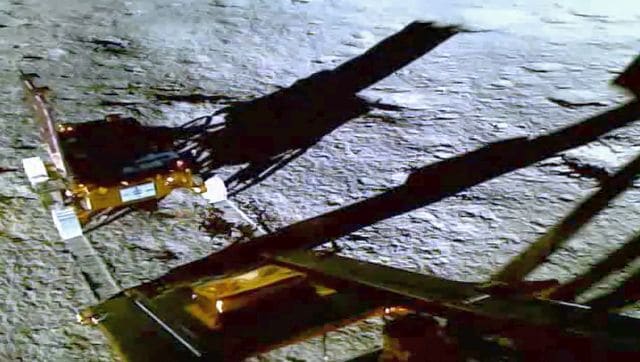Chandrayaan-3’s Pragyan rover detects presence of sulphur on Moon’s South Pole, reveals ISRO

LIBS conducted measurements of the elemental composition of the lunar surface. It conducted the analysis by exposing the materials to intense laser pulses.
PTI
The first-ever on site measurements carried out by the Laser-Induced Breakdown Spectroscope instrument onboard ‘Pragyan’ rover of Chandrayaan-3 has confirmed the presence of sulphur on the South Pole of the lunar surface, ISRO said on Tuesday.
The space agency also said the instrument detected aluminium, calcium, iron, chromium, titanium, manganese, silicon and oxygen, as expected on the surface of the moon.
“In-situ scientific experiments continue…Laser-Induced Breakdown Spectroscope (LIBS) instrument onboard the Rover unambiguously confirms the presence of Sulphur (S) in the lunar surface near the south pole, through first-ever in-situ measurements,” ISRO said in a social media post on X, formerly known as Twitter.
Related Articles
“The presence of Al, Ca, Fe, Cr, Ti, Mn, Si, and O have also been detected, as expected. Search for Hydrogen (H) is underway,” the national space agency headquartered in Bengaluru said.
Chandrayaan-3 Mission:
In-situ scientific experiments continue …..
Laser-Induced Breakdown Spectroscope (LIBS) instrument onboard the Rover unambiguously confirms the presence of Sulphur (S) in the lunar surface near the south pole, through first-ever in-situ measurements.… pic.twitter.com/vDQmByWcSL
— ISRO (@isro) August 29, 2023
“Preliminary analyses, graphically represented, have unveiled the presence of Aluminum (Al), Sulphur (S), Calcium (Ca), Iron (Fe), Chromium (Cr), and Titanium (Ti) on the lunar surface. Further measurements have revealed the presence of manganese (Mn), silicon (Si), and oxygen (O). Further thorough investigation regarding the presence of Hydrogen is underway,” an ISRO statement said.
LIBS conducted measurements of the elemental composition of the lunar surface. It conducted the analysis by exposing the materials to intense laser pulses. The LIBS instrument that was used to carry out the measurements has been developed at the Laboratory for Electro-Optics Systems (LEOS) ISRO, Bengaluru.

Atul Tiwari is a seasoned journalist at Mumbai Times, specializing in city news, culture, and human-interest stories. With a knack for uncovering compelling narratives, Atul brings Mumbai’s vibrant spirit to life through his writing.







